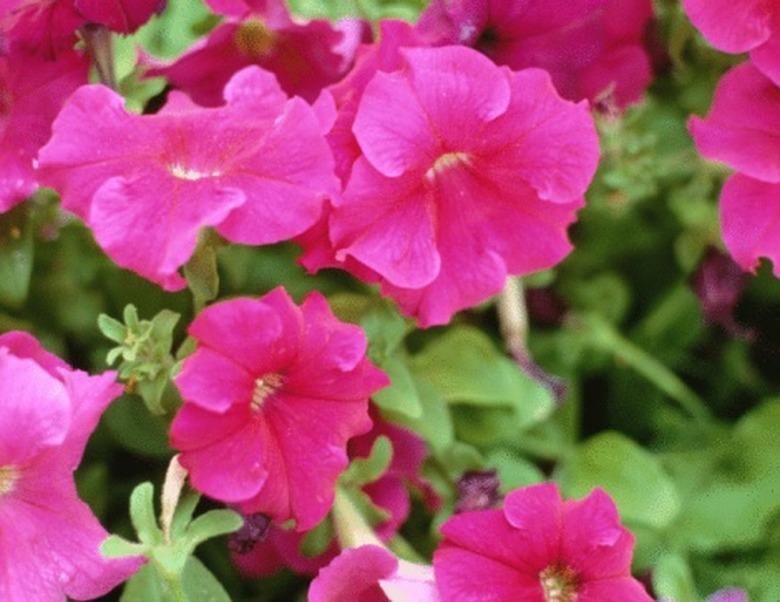My Petunia Leaves Are Turning Brown
When your petunia leaves are turning brown, it can be discouraging and frustrating. The dried-up, discolored leaves take away from the beauty of the long-lasting blooms on the petunia (Petunia x hybrida, USDA zones 10-11). Certain diseases caused by fungi that affect petunias are often to blame for the leaf damage, including brown coloration and wilting. Identifying the cause early can help save the plant in some cases, but other diseases are difficult to correct and might kill your petunia plant.
White Mold Fungus
One fungal issue that affects petunia plants is white mold. Brown and wilted leaves can occur over the entire plant or on just a few branches. Stem discoloration makes it appear white or tan in the affected areas. You might also find hard black spots on the stems. If the petunia is growing in high-humidity conditions, this fungus can cause fluffy white growth on the stems that looks like cotton.
It can be difficult to get rid of white mold. If the whole plant is affected, discard it and start over. If the white mold is only on part of the petunia, you can try cutting off the affected stems several inches below the damaged part. Destroy the dead plants or diseased stems you prune, as composting them could cause the bacteria to infect other plants.
Gray Mold Fungus
Gray mold is a different type of fungus that can cause brown spots on petunia leaves and wilting on the plant. The brown spots can appear blotchy and often have a targetlike appearance with some darker brown areas. As it progresses, the fungus can make the entire leaf appear brown.
The flowers can also turn brown and might fall off the plant, and the disease can also progress to the stems, causing them to turn brown. When the weather is humid, you'll likely notice fuzzy gray mold growing on the damaged parts. It typically grows when the weather is cool and wet. Like white mold, gray mold fungus can affect the entire plant or just parts of it.
Warm, dry conditions can help the petunia recover from gray mold. Cut away the damaged areas to help the plant grow stronger. Keeping the plant as dry as possible helps. If you irrigate the petunias, do it in the morning so they have time to dry in the sun and use a soaker hose or drip irrigation instead of overhead watering to minimize moisture on the plants. Proper spacing also helps because it allows air to circulate around plants.
Black Root Rot
Black root rot happens when your petunia plant gets too much water. Those moist conditions promote the fungal pathogens that cause root rot. The petunia's roots start to rot, often turning them black and mushy. This causes the plant to struggle, often resulting in wilted and yellowed leaves. The leaves can also turn brown.
Petunias with root rot often die. However, if the root rot issue is minor, you might be able to save the plant. Decrease how much water you give the plant and make sure it's planted on well-draining soil to correct the damp soil issue.
Verticillium Wilt Disease
Verticillium wilt is caused by a fungus in the soil. The result is damage to the leaves, often starting with a yellow leaf color and progressing to brown, dry leaves in later stages. If it's not treated, verticillium wilt can kill the petunia plant.
Disease-resistant petunia plants are better equipped to resist verticillium wilt. If you've previously had issues with verticillium wilt, don't plant new petunias or other plants that are susceptible to the fungus in the same area. The fungus stays in the soil and can affect future petunia plants.
You can also prune petunias to remove the damaged parts. Sterilize your pruning shears by wiping the blades with isopropyl alcohol before making each cut to prevent spreading the fungus. Get rid of affected plants and all debris.
